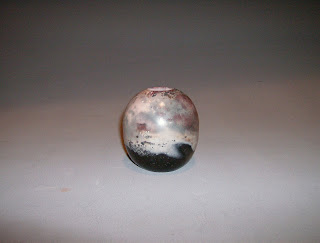
I know. This is the same photo of the pots I posted last week, but I'm still working on them.
These are the babies that are going into the second Barrel-Firing, which seems to be set back farther on a daily basis due to weddings, weekend commitments, end yes--even work.
I did get these pots trimmed last Friday and thought I was going to burnish them all this weekend, but I was called into work on Sunday and only managed to get two of them burnished yesterday. Stay tuned--I'm still working on this post.
July 31st--Too much work makes Jeff a cranky person, but the good news is that the pots above have been burnished. It only took two weeks and even my friend John burnished one. His first attempt was a beautiful success. Now we just need to find time to fire-up the barrel.



